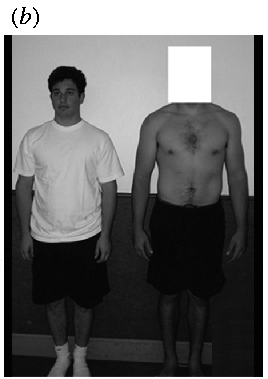Formidability
Aaron Sell and Leda Cosmides and John Tooby and Daniel Sznycer and Christopher von Rueden and Michael Gurven, "Human adaptations for the visual assessment of strength and fighting ability from the body and face", in Proceedings of the Royal Society B: Biological Sciences, forthcoming.

Abstract
Selection in species with aggressive social interactions favours the evolution of cognitive mechanisms for assessing physical formidability (fighting ability or resource-holding potential). The ability to accurately assess formidability in conspecifics has been documented in a number of non-human species, but has not been demonstrated in humans. Here, we report tests supporting the hypothesis that the human cognitive architecture includes mechanisms that assess fighting ability—mechanisms that focus on correlates of upper-body strength. Across diverse samples of targets that included US college students, Bolivian horticulturalists and Andean pastoralists, subjects in the US were able to accurately estimate the physical strength of male targets from photos of their bodies and faces. Hierarchical linear modelling shows that subjects were extracting cues of strength that were largely independent of height, weight and age, and that corresponded most strongly to objective measures of upper-body strength—even when the face was all that was available for inspection. Estimates of women's strength were less accurate, but still significant. These studies are the first empirical demonstration that, for humans, judgements of strength and judgements of fighting ability not only track each other, but accurately track actual upper-body strength.

History of fighting
The questionnaire filled out by the stimulus subjects contained one question relevant to the analyses reported: “I have been in fights in the last four years. (Fights include shoving matches, fistfights, wrestling, and anything physical beyond yelling).” They were asked to not count sporting matches (e.g., wrestling, martial arts). Answers ranged from 0 (42% of subjects) to 11 fights (2 subjects). 61% had been in 0-1 fights, 70% in 0-2 fights. A square root transformation was applied to this data to normalize the distribution for analyses.

Concluding Sentence
The overall pattern of results supports the hypothesis that the human cognitive architecture contains specializations for formidability assessment.
No, it does not, since no effort is made in the study to discriminate between this hypothesis and the alternative hypothesis that the results are the result of a learned, non-specialised capacity. Moreover, I can detect from reading this article that I could beat the authors in a fight, either one by one or all at once.

Figures
(a) US face, (b) US body, (c) Bolivian face and (d) Andean face.